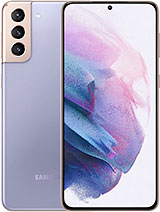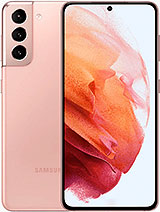Samsung Galaxy S21: Camera Review By Alex Zhang
Oh, I see someone crossing the street gotta get in front of this jeep. Yes, yo, what's good everyone, so all the photos you saw in the intro were shot on the new Samsung Galaxy s21 Samsung just released the new s21 lineup and, as usual they were able to pack a ton of tech into these devices. Most of the videos I've seen are on the ultra variant, the best that Samsung has to offer, but just because it's Samsung's best doesn't mean that it's best for everyone. Personally, I hate big phones, so I pre-ordered the regular s21, the smallest and cheapest of the bunch, but it still has most of the tech that the ultra offers, especially in the camera department. Unfortunately, there's not a lot of videos about this phone and I think it deserves way more recognition, so give this a thumbs up for the underdog. In this video, I will be reviewing the galaxy s21 from a photographer's perspective.
This may be a longer video, but I will go in depth on the camera system and see just how this triple camera setup performs in real life situations. There will be tons of footage and lots of example, photos. Let's start off with the design. The galaxy s21 is nothing out of the ordinary. You get a flat 6.2 inch, 120hz screen on the front power and volume buttons on the right hand, side and an USB connection at the bottom. The back is where most of the changes are.
The mac gray color I have here is sleek and stealthy. It doesn't shout for attention, but still has its own distinctive look. The camera module is redesigned this year with a metal face plate that flows seamlessly into the side trim of this device at first it looked a bit weird, but the design has grown on me. Camera bumps have gotten so large and obtrusive over the past few years that this design is quite elegant in comparison from a practical standpoint having metal around the lenses instead of glass, like other phones, will help protect it. In the long run.
The main camera on the galaxy s21 uses a 12 megapixel sensor with a pixel size of 1.8 microns. This is the camera. You will use most of the time because the 26 millimeter focal length is great for everyday snapshots. Let's take a closer look at the sharpness in this brick wall shot you can see. The center performance is very good.
The textures and details in the brick are sharp. There is slight over sharpening, which is to be expected, but it doesn't really bother me here. Moving on to the corners, you can see some softness and smearing of the details. Overall, I don't think this will affect real world use, especially since most of the time your subject will be in the center of the frame. This first photo is a great example of how the main camera on the s21 is perfect for general walk around use.
I saw this taxi stuck in the snow, with a train of cars behind it. I just mindlessly snapped this shot, and I'm amazed with the detail that this phone was able to capture just look at all the snow flying around for this next shot. Furthermore, I was trying to frame the people between these two pine trees. Just look at the detail of the snow on this tree. You can even see the individual leaves in this next image.
I was really surprised by how well the s21 was able to nail the white balance. This is a tricky scenario, because most of the frame is taken up by this dark building, but then you still have this bright snow in the foreground. The phone was able to balance out all of these elements to expose for the building yet still keep the snow. Looking white here is another example that shows just how much detail you can pull out of this main camera. The ultra-wide camera also uses a 12 megapixel sensor with a 1.4 micron pixel size. The wide-angle lens has a massive 120 degrees field of view, just to give some perspective, the widest lens that Sony makes goes up to 12 millimeters, and it costs thousands of dollars.
So to have this kind of lens in your pocket is truly amazing. Taking a look at this brick wall, you can see that the center performance is pretty good. However, the corners do fall off quite a bit. This is to be expected due to the nature of an ultra-wide lens. Distortion.
Is also apparent, but the built-in correction does a pretty good job. This is one of my favorite lenses to shoot with, because you can capture some unique and special shots with the ultra-wide. For example, this image really highlights the strengths of this lens. With all the leading lines, the amount of detail that this lens can resolve is also really impressive for how wide it is. With this type of perspective, the viewer is pulled into the shot, and you can create some really immersive images like this one where it feels like you are in the scene itself.
Of course, another strength of an ultrawide is to fit everything into the frame. So if you want to take photos of a big statue or tall buildings, this is definitely the camera that you want to use. The third lens on the s21 is the telephoto. This camera uses a 64 megapixel sensor with a 0.8 micron pixel size Samsung calls it a telephoto, but it's not a true telephoto in the world of photography. It just has a bit more zoom compared to the main and ultra-wide lenses.
However, in real world use, it still performs fine, it's perfect for those uses where you need to zoom in on your subject or create really tight compositions in the software. You can zoom all the way to 30x, but the image starts to break down past 10x. This is all digital zoom, so the phone is essentially just cropping in on the image using the same brick wall test. I find that this lens appears sharper at first, but the details are a bit soft when you zoom in this is due to the over sharpening that Samsung applies in the software, since this is a hybrid optical zoom. However, in real world use, this lens still performs fine, for example, in this shot, I zoomed in only on this corner deli, and the software sharpening does a great job in retaining the detail in all of this text.
You can even see the individual bricks as you move around in the frame. This next image is a great example of being able to isolate your subject with a tighter focal length. There were people crossing the street on both sides, but I was able to keep them out of frame and just capture this one person. Like the previous image I was able to zoom in on these two guys pushing the stuck van, because this lens gives such a narrow perspective. It allows your photos to convey a tight story, as you can tell these in-depth videos take a ton of time to create.
So I would really appreciate it if you give this video a thumbs up and subscribe to my channel if you want to stay updated with new content. Here are some comparison photos between the three cameras you can see just how versatile this camera setup is, and it essentially mimics my own walk around kit. When I shoot with the Sony a7 series, the front camera is 10 megapixels, and it does a pretty good job. I'm not one to usually take too many selfies, but the few that I did take for this review. Video came out.
Looking pretty good. Details are clear and colors are vibrant portrait mode works really great as well. Portrait mode is another great software feature that has gotten much better. With the galaxy s21 I like how Samsung is trying to emulate real both with depth, fall off and secular highlights. Not only are you able to take portraits of people, you can also isolate objects.
You still have to get pretty close to your subject and shoot in good lighting for the best results, low light and nighttime photography is where you will start to see the s21 struggle a bit. The phone tends to overexpose the highlights during the nighttime shots, but that is easily corrected with the exposure slider. That appears when you tap on the screen. These city. Shots are pretty clean, and they came out much better than I expected.
However, when you look at it on a big monitor, the photos are overall softer due to the noise reduction. This is just the nature of small sensors, since they can't let, in that much light, like most manufacturers, Samsung is trying to use computational photography to overcome the small sensor limitations. The night mode on the s21 is a great example of this. There is an indicator to let you know how long the night mode is active for, so you should stay as still as possible during the countdown. Some of these images may appear grainy, but the phone is able to produce images that I couldn't even see with my own eyes of software.
The s21 has a ton of different shooting modes. I won't get into all of them in this video, but I do want to touch on the pro mode. When you select the pro mode, it will allow you to fine tune settings like ISO shutter, speed, white balance, and it even allows you to manual focus with focus peaking. I was really surprised to see these features on the phone, so pro mode is great. If you want to fine-tune your settings for shots like long exposures, but realistically speaking, I really wouldn't use this mode too much.
The controls are just too slow to configure and by the time I dial in my settings that decisive moment has already passed, and I would have missed the shot. But I do appreciate that it's in the native software, so you don't need to go download a third-party app just to have more access to your camera controls. If you do choose to shoot in pro mode, you can export the raw photos as dogs, which is great for that extra post-processing ability. The s21 also has great video capabilities. I'm not going to go into too much detail, because this is a photography focused review.
But here are some example clips using the different shooting methods. So all right, so we all knew the Samsung Galaxy. S1 has an impressive set of cameras, but I didn't know just how great they were until after extensively testing them out in some pretty challenging conditions. To be able to have this three lens kit in your pocket is still just mind-blowing for me. The only reason I would go for the ultra instead of the regular s21 is for that extra zoom capabilities other than that this phone has 99 of the same tech at a much better price point.
While I am very impressed with the s21, it won't replace my Sony cameras anytime soon. Although I do find myself reaching for my phone more and more, this was a pretty long video. So, if you're still with me, I really appreciate that if you have any questions drop them in the comments section below. I try to reply to everyone, and I love having this kind of discussions with you guys, thanks for watching and see you next time, peace, you.
Source : Alex Zhang


























